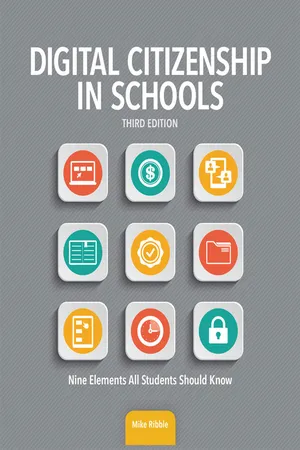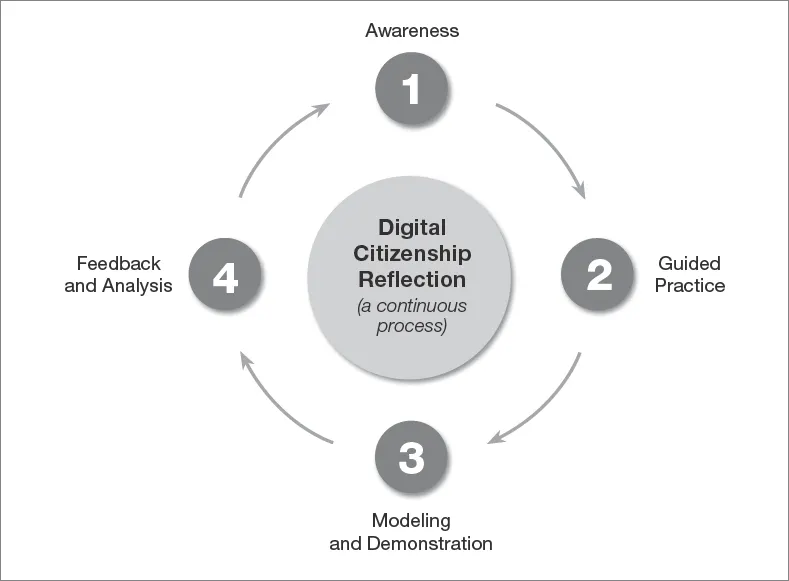
Digital Citizenship in Schools
Nine Elements All Students Should Know
- English
- ePUB (mobile friendly)
- Available on iOS & Android
About this book
This essential exploration of digital citizenship provides a framework for helping students become productive and responsible users of digital technologies. Students today have always had technology in their lives, so many teachers assume their students are competent tech users — more competent, in fact, than themselves. In reality, not all students are as tech savvy as teachers might assume, and not all teachers are as incompetent as they fear. Even when students are comfortable using technology, they may not be using it appropriately. Likewise, educators of all skill levels may not understand how to use technology effectively. Both students and teachers need to become members of a digital citizenry.Included in this new edition:
- The nine elements of digital citizenship and how to incorporate them in the classroom
- Professional development activities to instill citizenship concepts
- Changes to the technology landscape, new tools and devices
- Lesson plans, correlated to the ISTE Standards, for teaching different aspects of digital citizenship
This book is designed to help a district- or site-based team understand digital citizenship and how it can affect their curriculum and schools. Likewise, this book can help individual educators and technology leaders see the importance of digital citizenship and identify ways it can improve teaching and learning with technology.
Audience: K-12 classroom teachers
Frequently asked questions
- Essential is ideal for learners and professionals who enjoy exploring a wide range of subjects. Access the Essential Library with 800,000+ trusted titles and best-sellers across business, personal growth, and the humanities. Includes unlimited reading time and Standard Read Aloud voice.
- Complete: Perfect for advanced learners and researchers needing full, unrestricted access. Unlock 1.4M+ books across hundreds of subjects, including academic and specialized titles. The Complete Plan also includes advanced features like Premium Read Aloud and Research Assistant.
Please note we cannot support devices running on iOS 13 and Android 7 or earlier. Learn more about using the app.
Information
SECTION III
Digital Citizenship in the Classroom


5
Teaching Digital Citizenship to Students

Stage 1: Awareness
Stage 2: Guided Practice
Quick Lesson: Role-Playing with Cell Phones
Stage 3: Modeling and Demonstration
Quick Lesson: Reviewing the School’s AUP
Stage 4: Feedback and Analysis
Table of contents
- Cover
- Title Page
- Copyright
- About ISTE
- About the Author
- Contents
- Preface to the Third Edition
- Introduction
- SECTION I: Understanding Digital Citizenship
- SECTION II: Digital Citizenship in Schools
- SECTION III: Digital Citizenship in the Classroom
- Appendixes
- Index